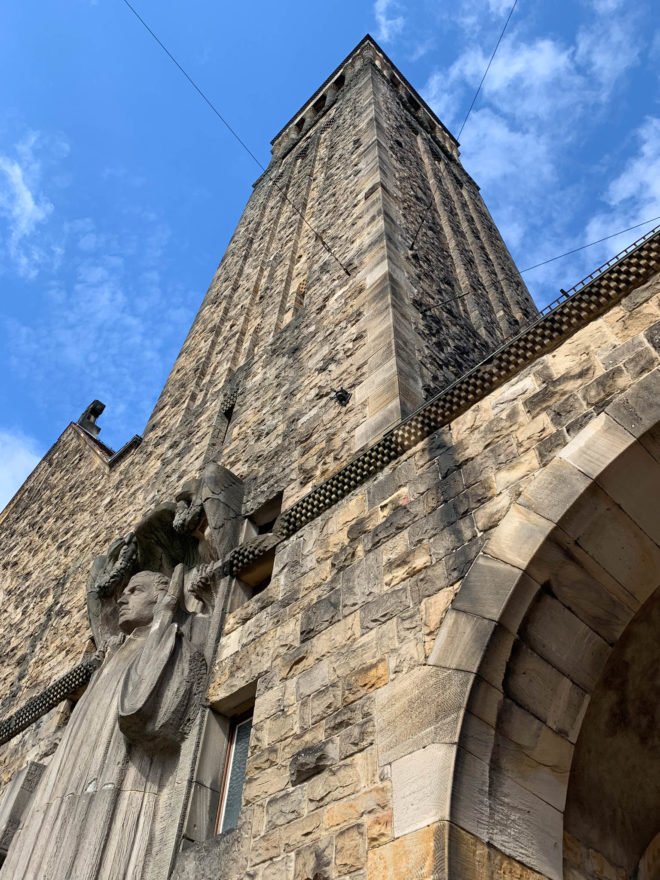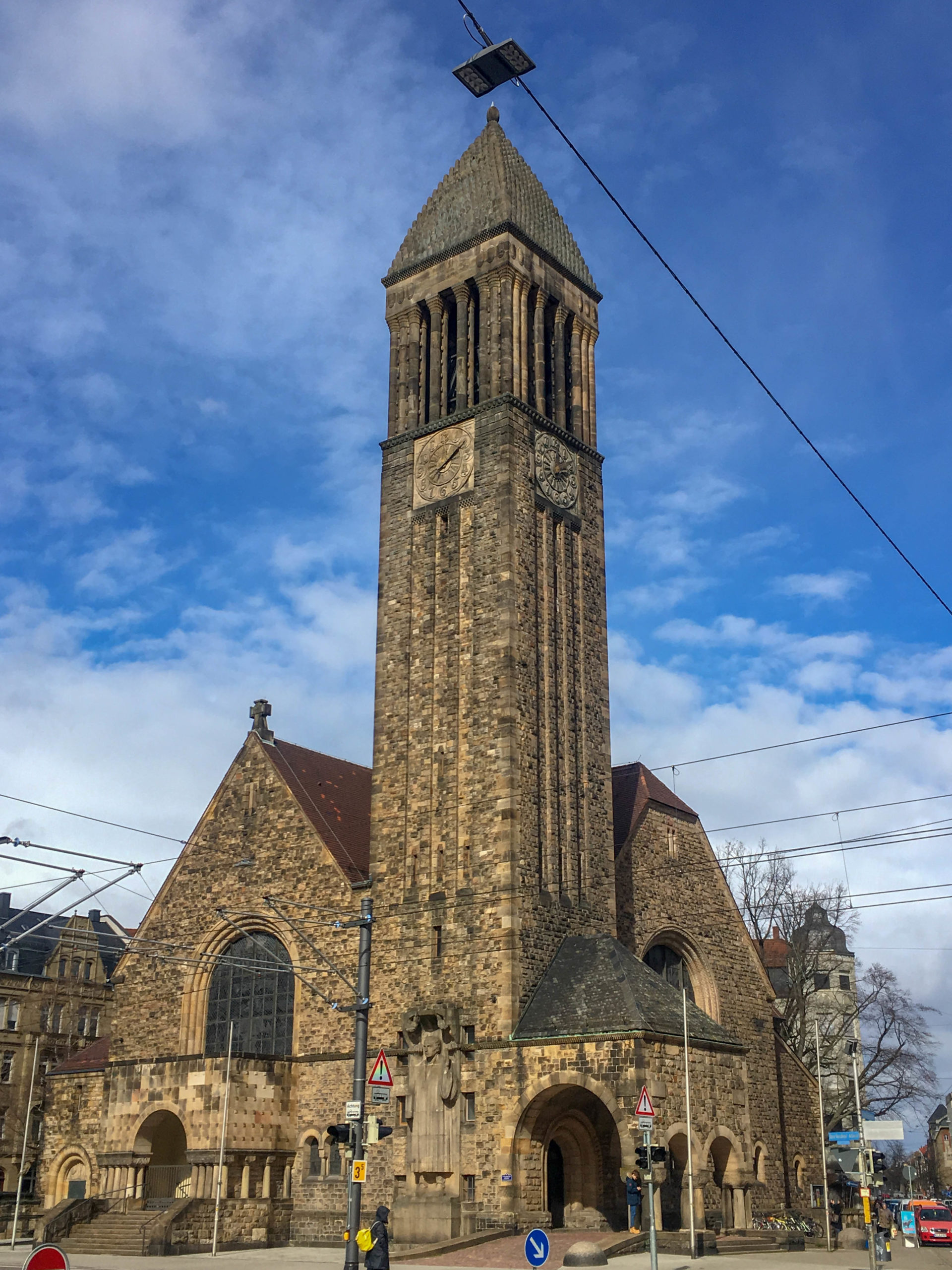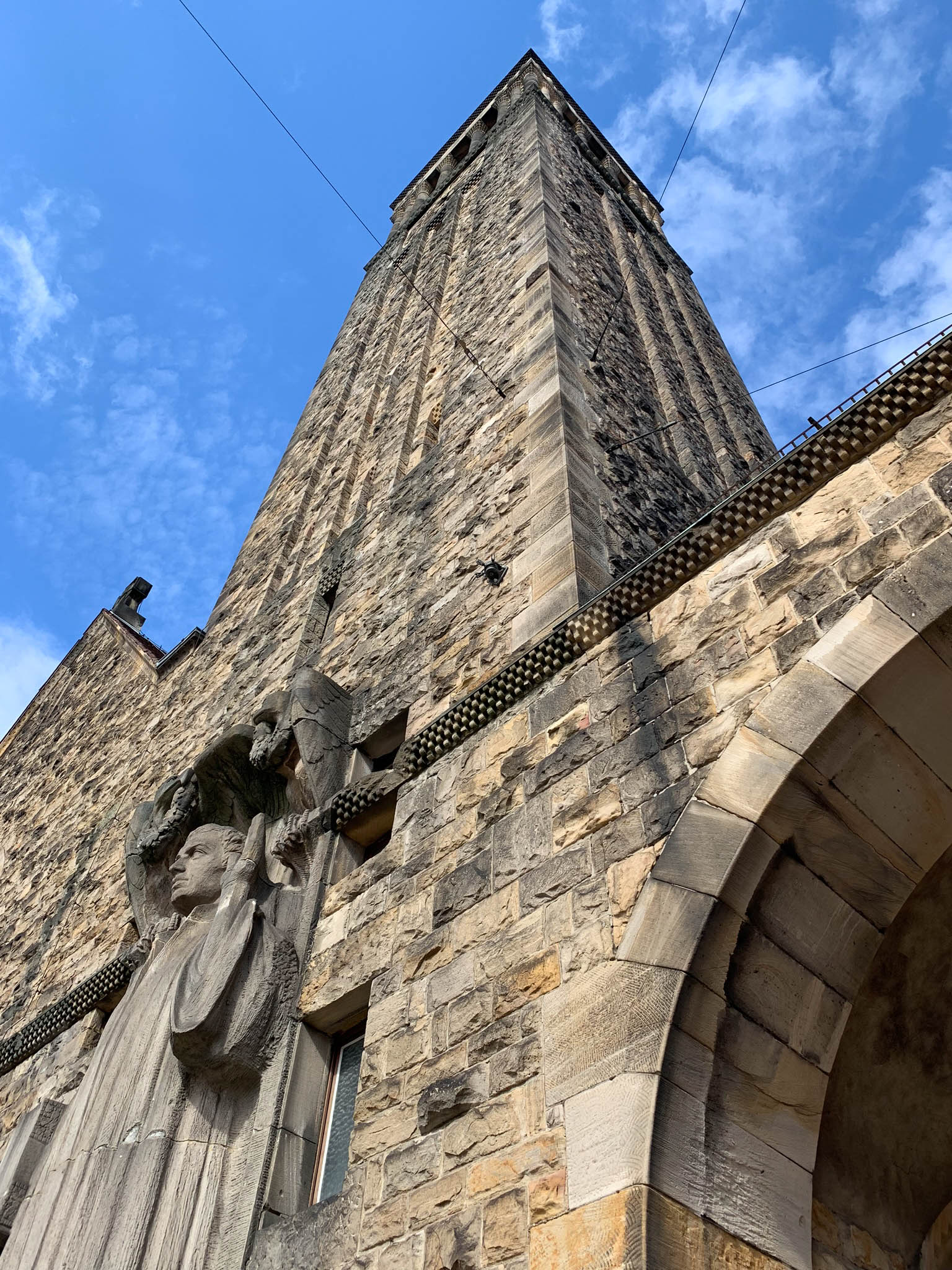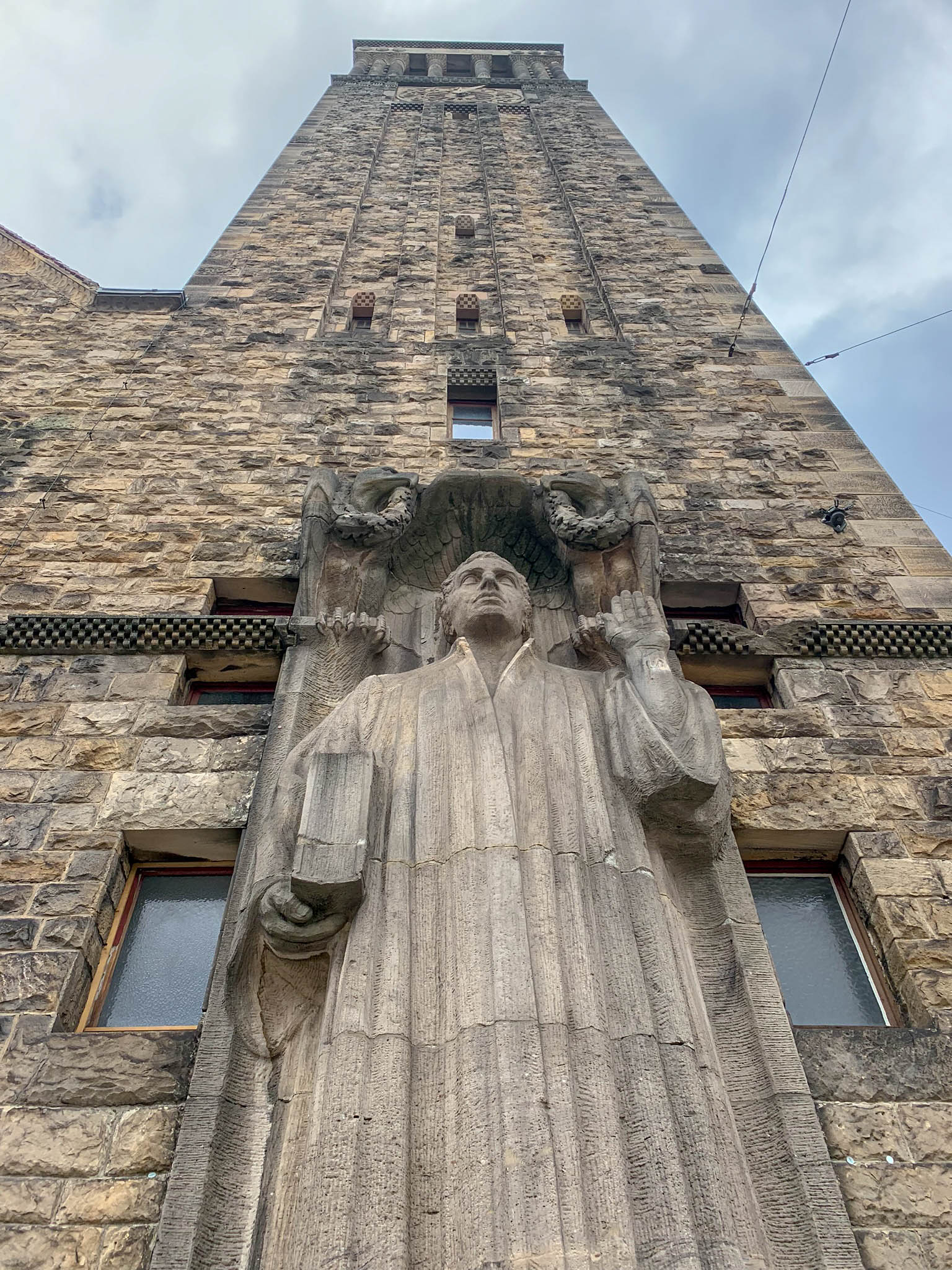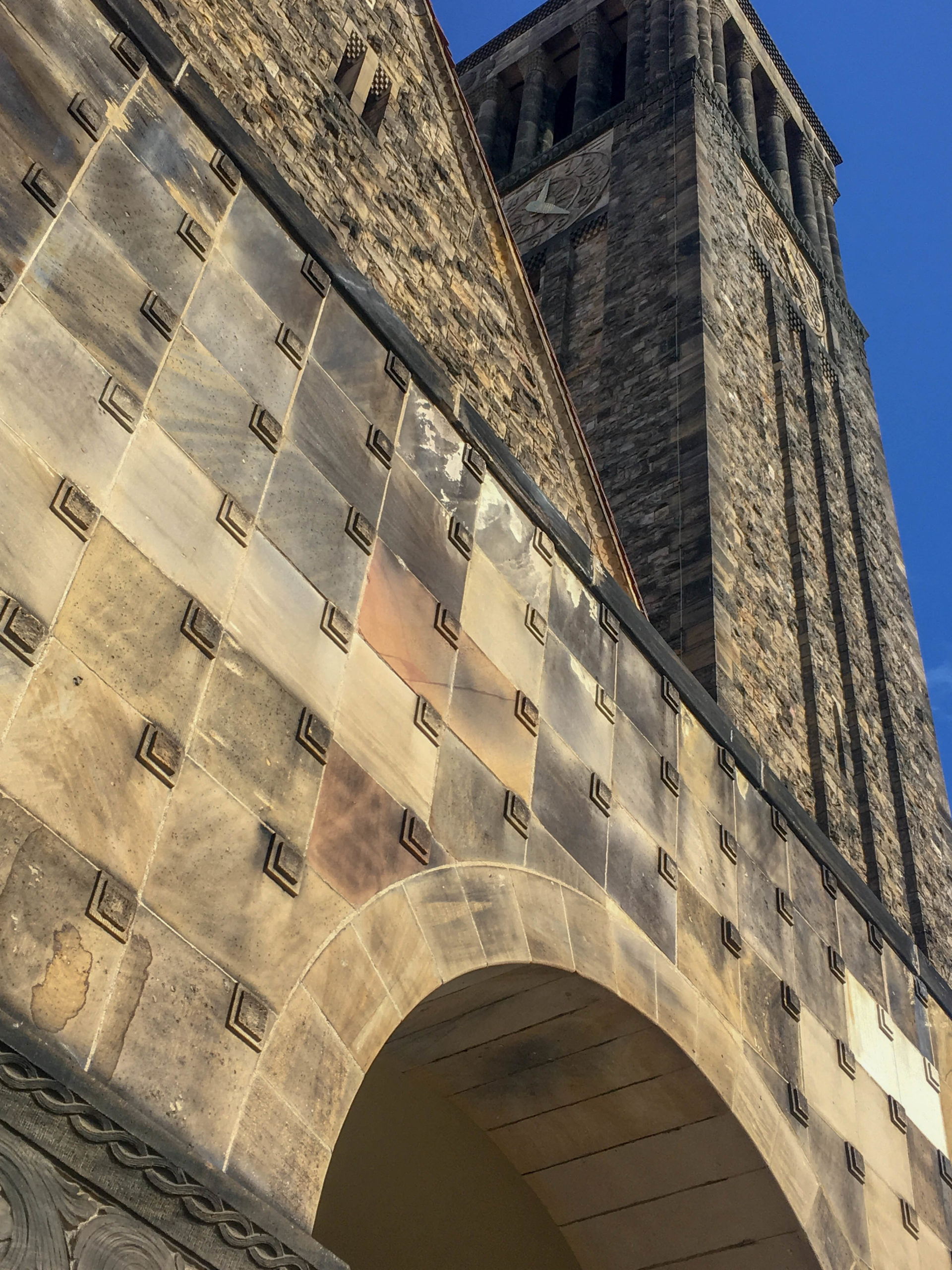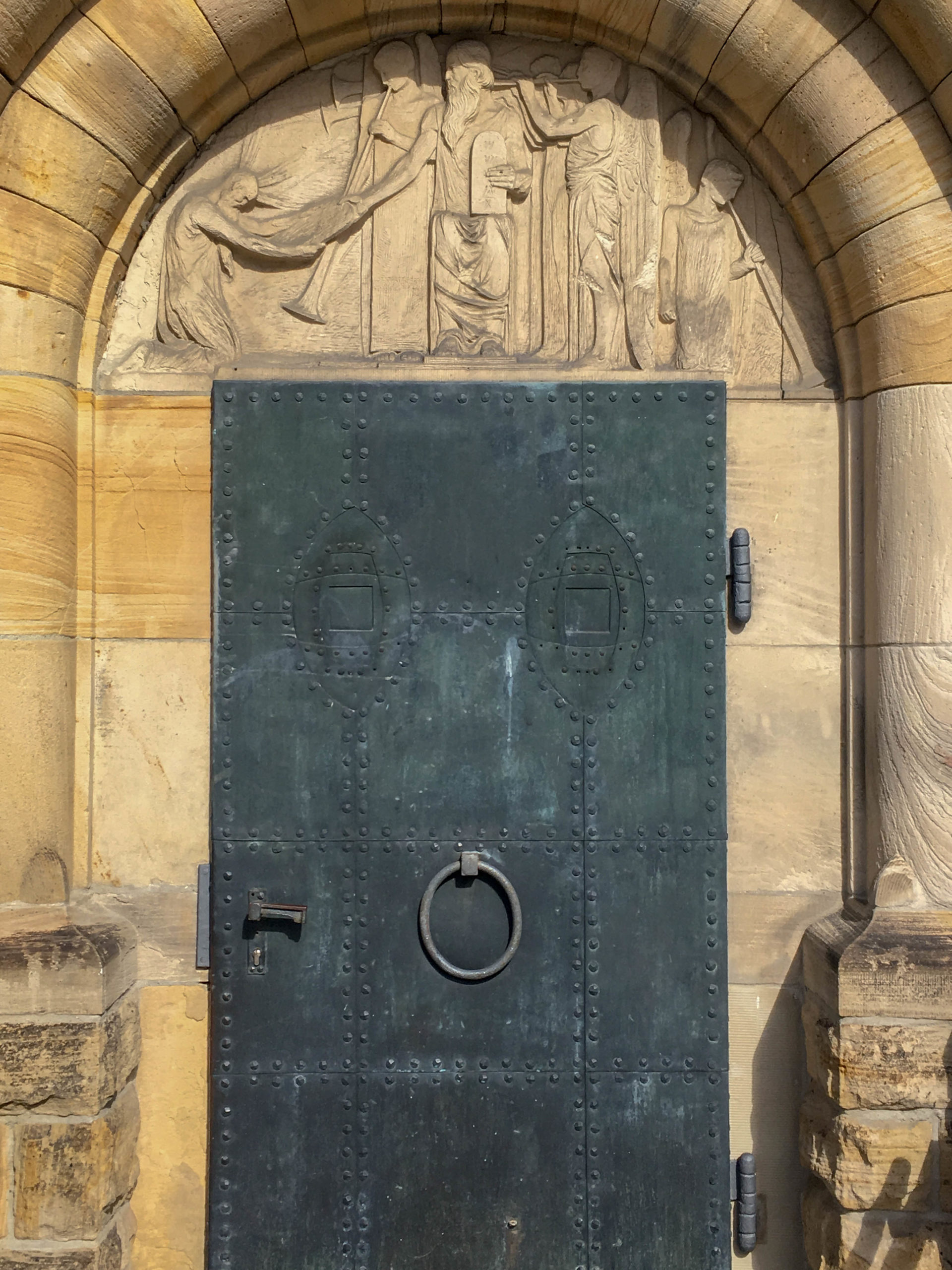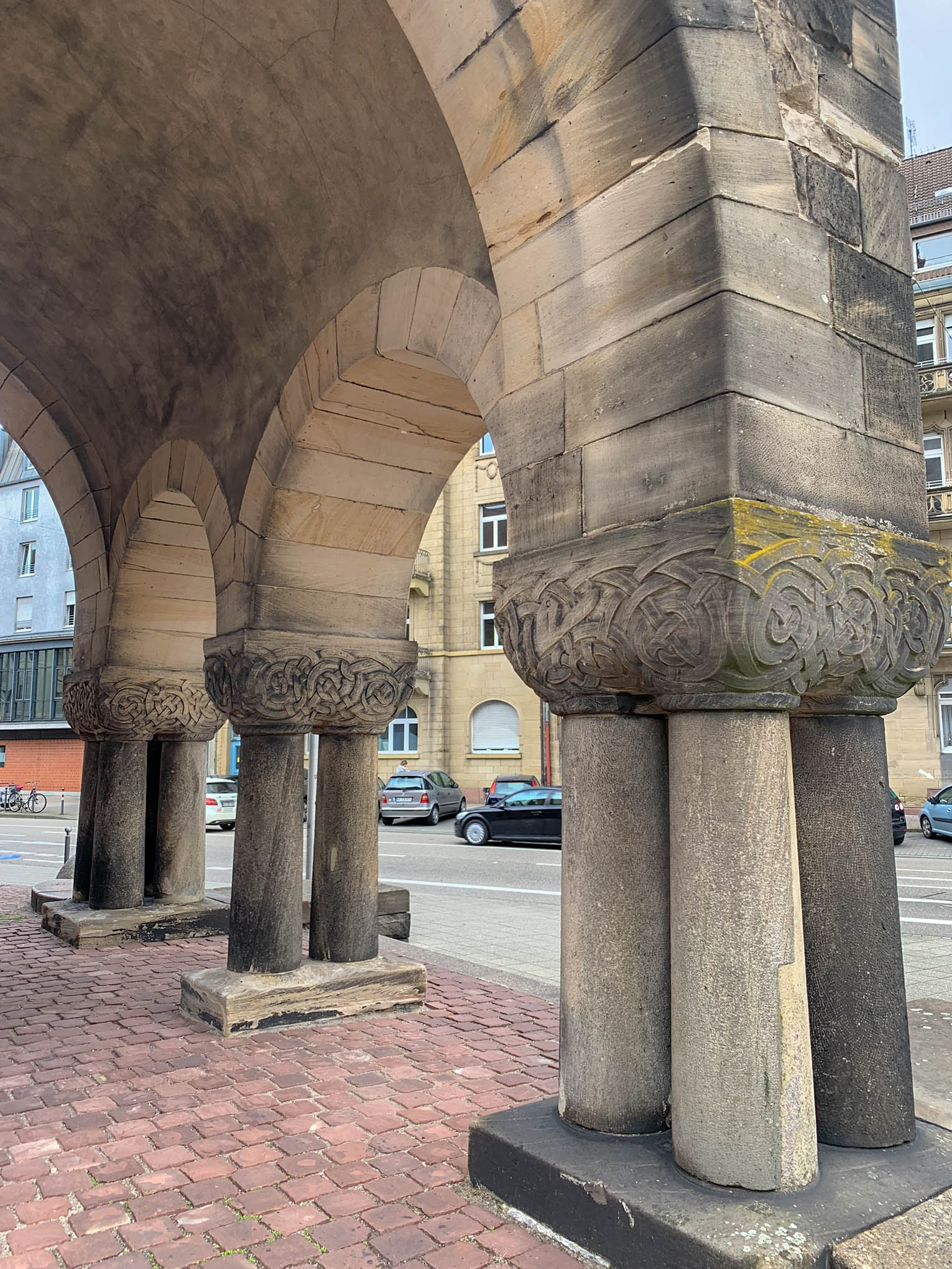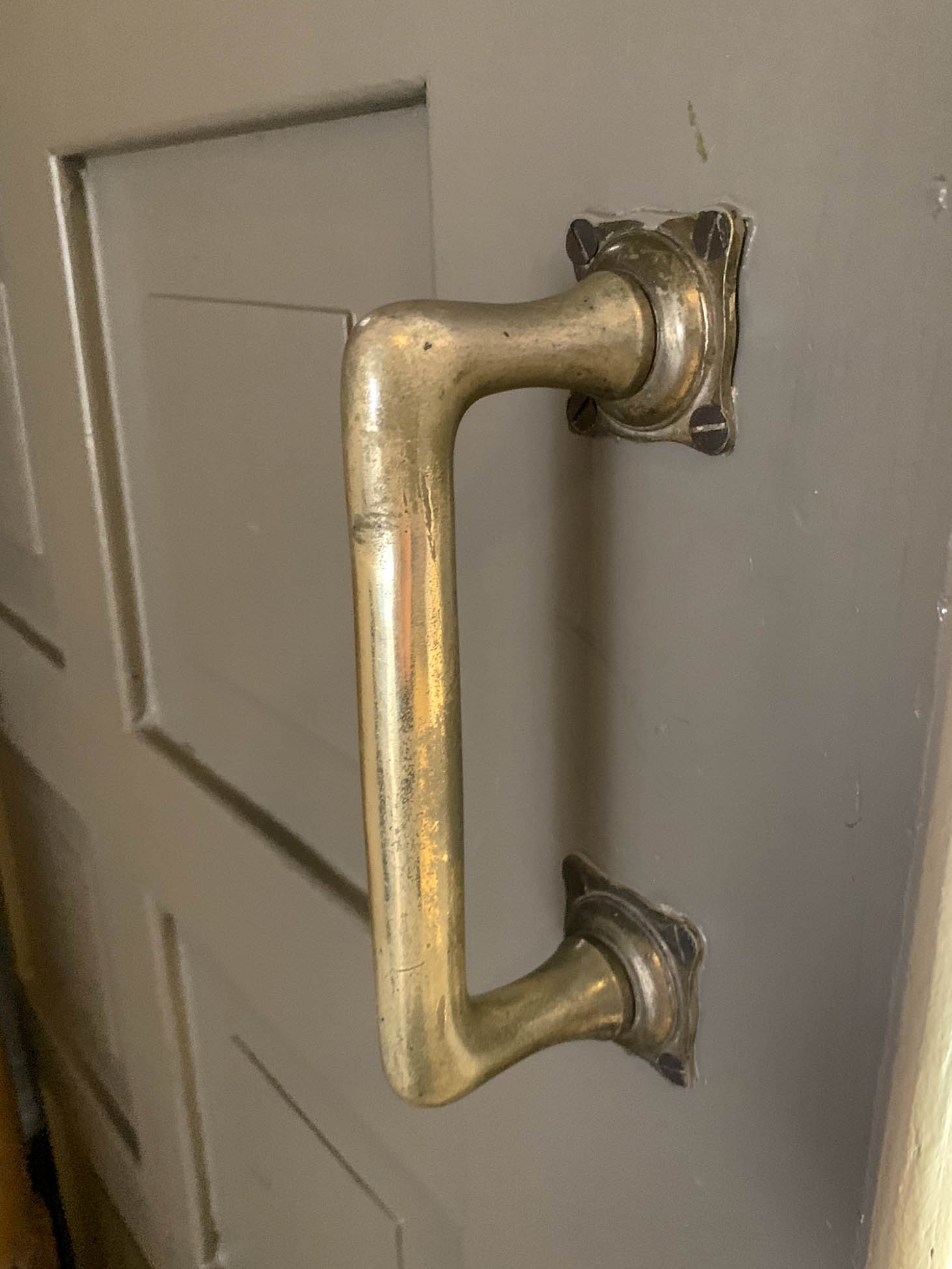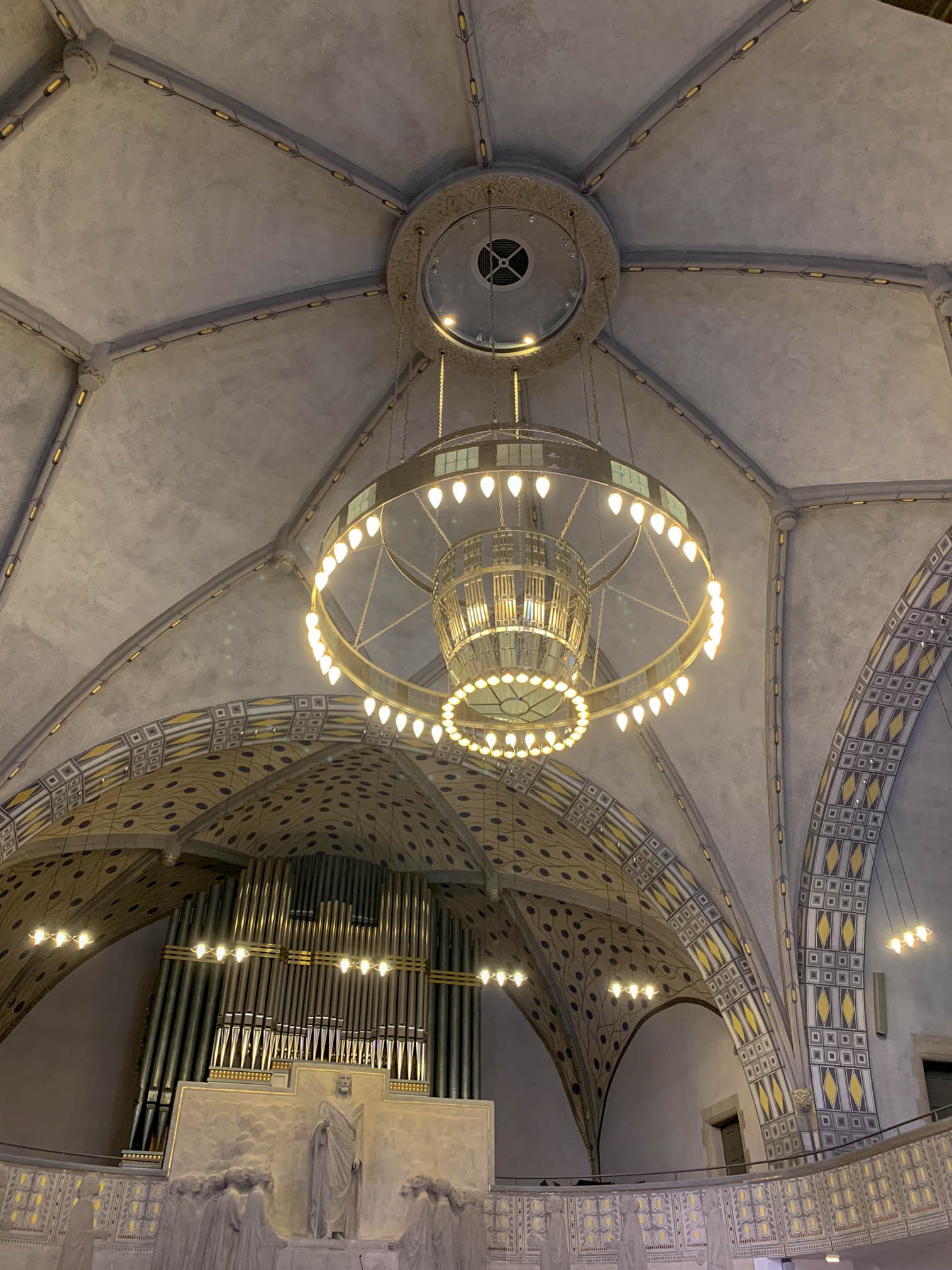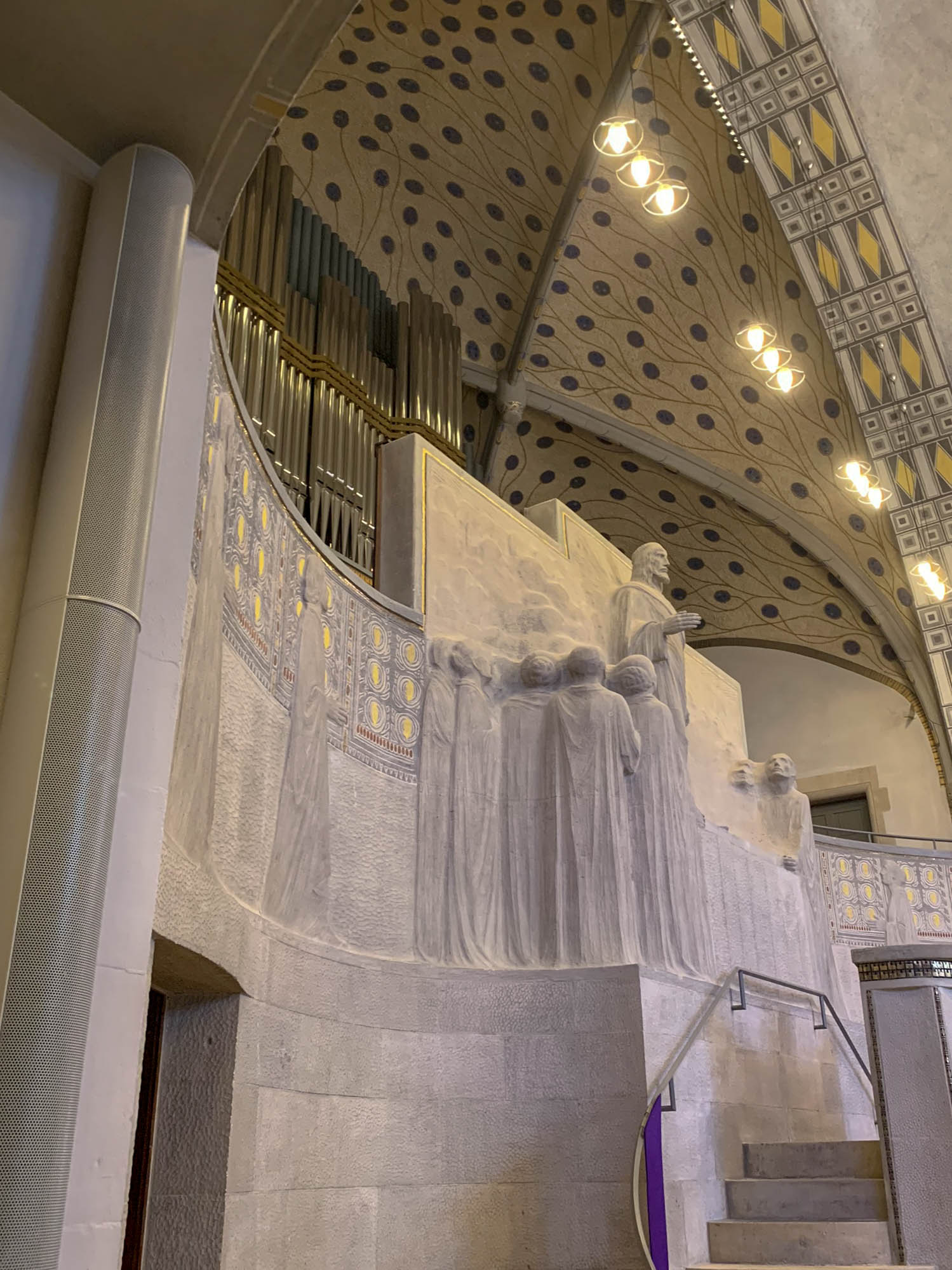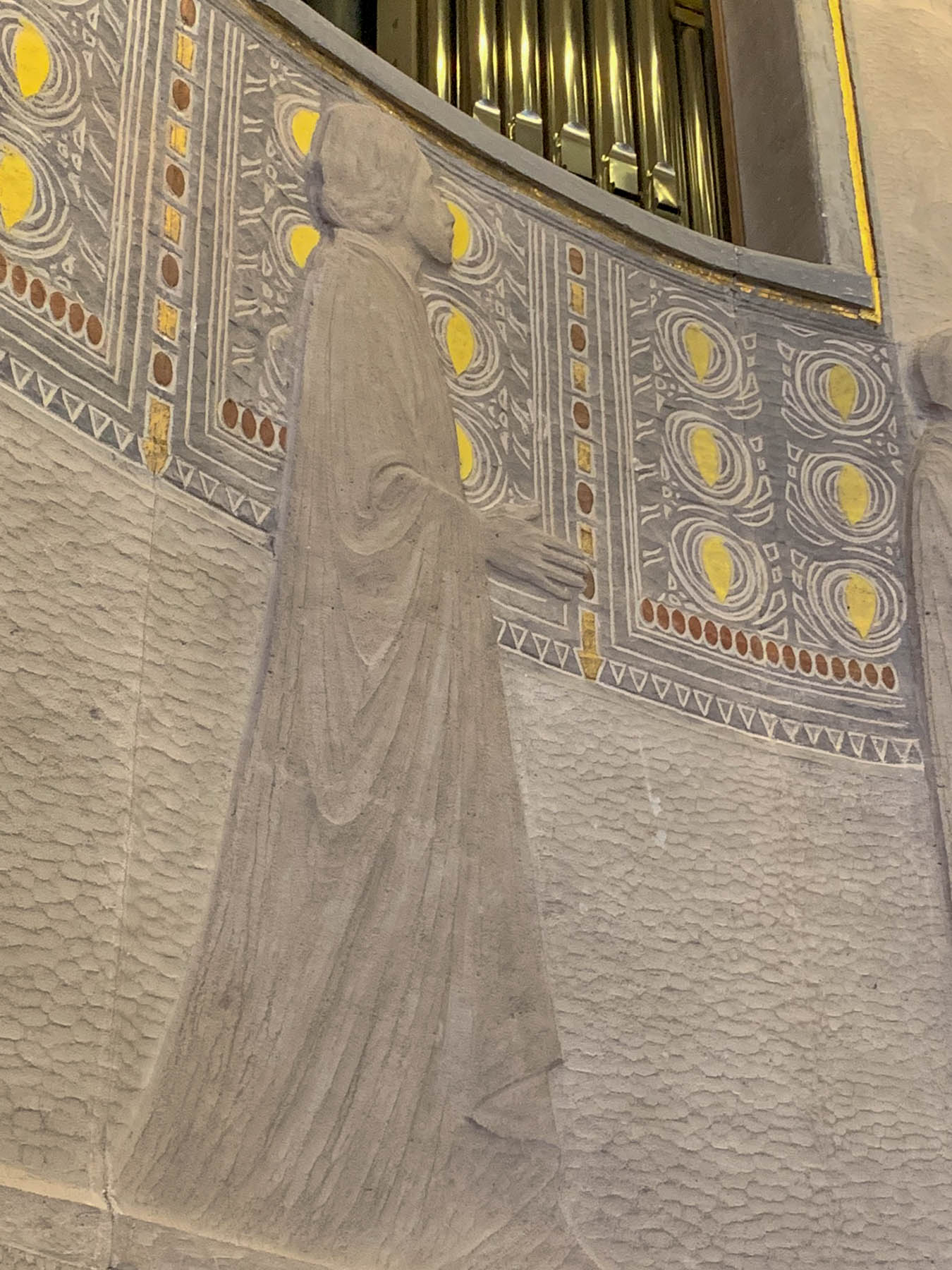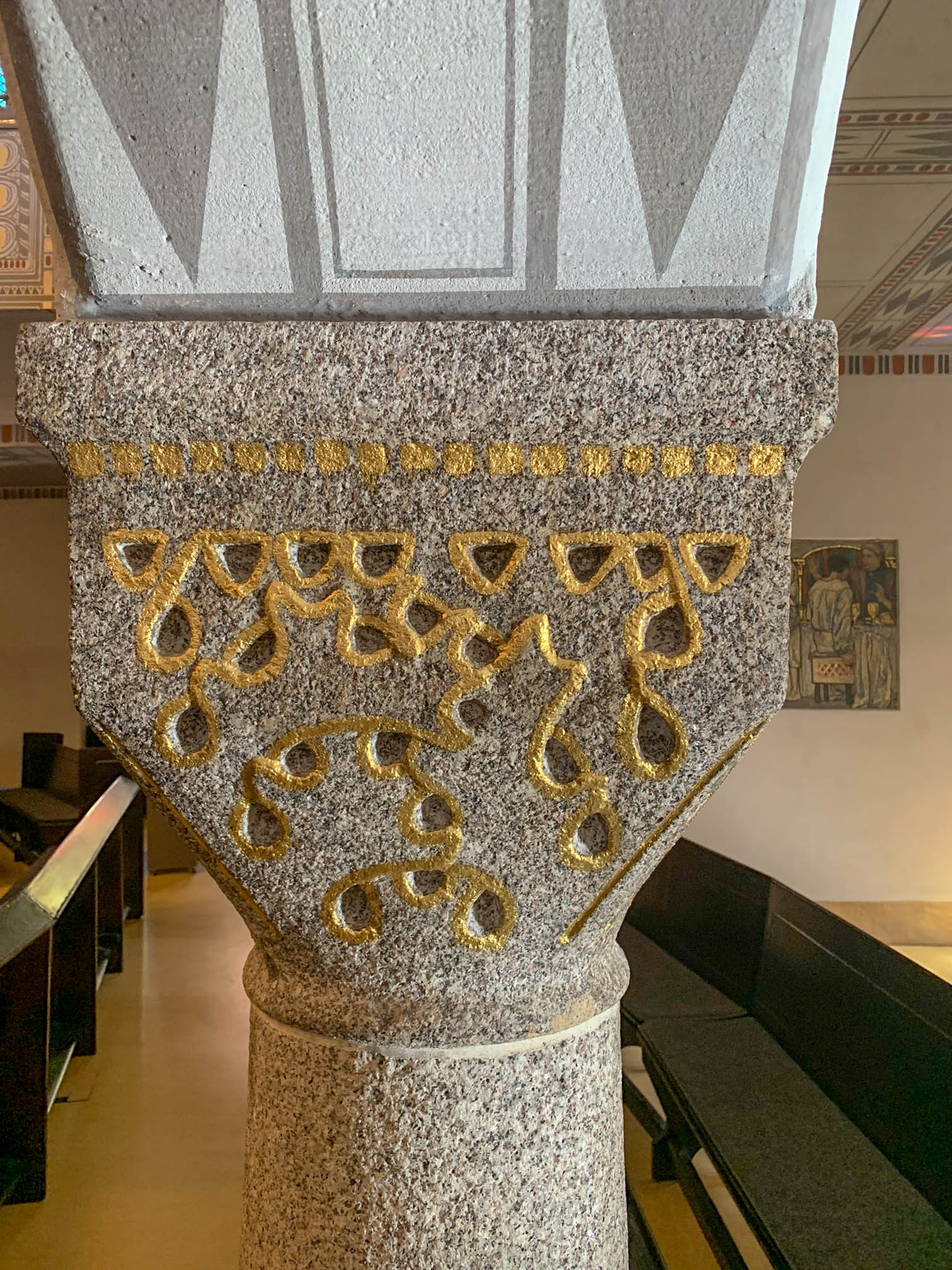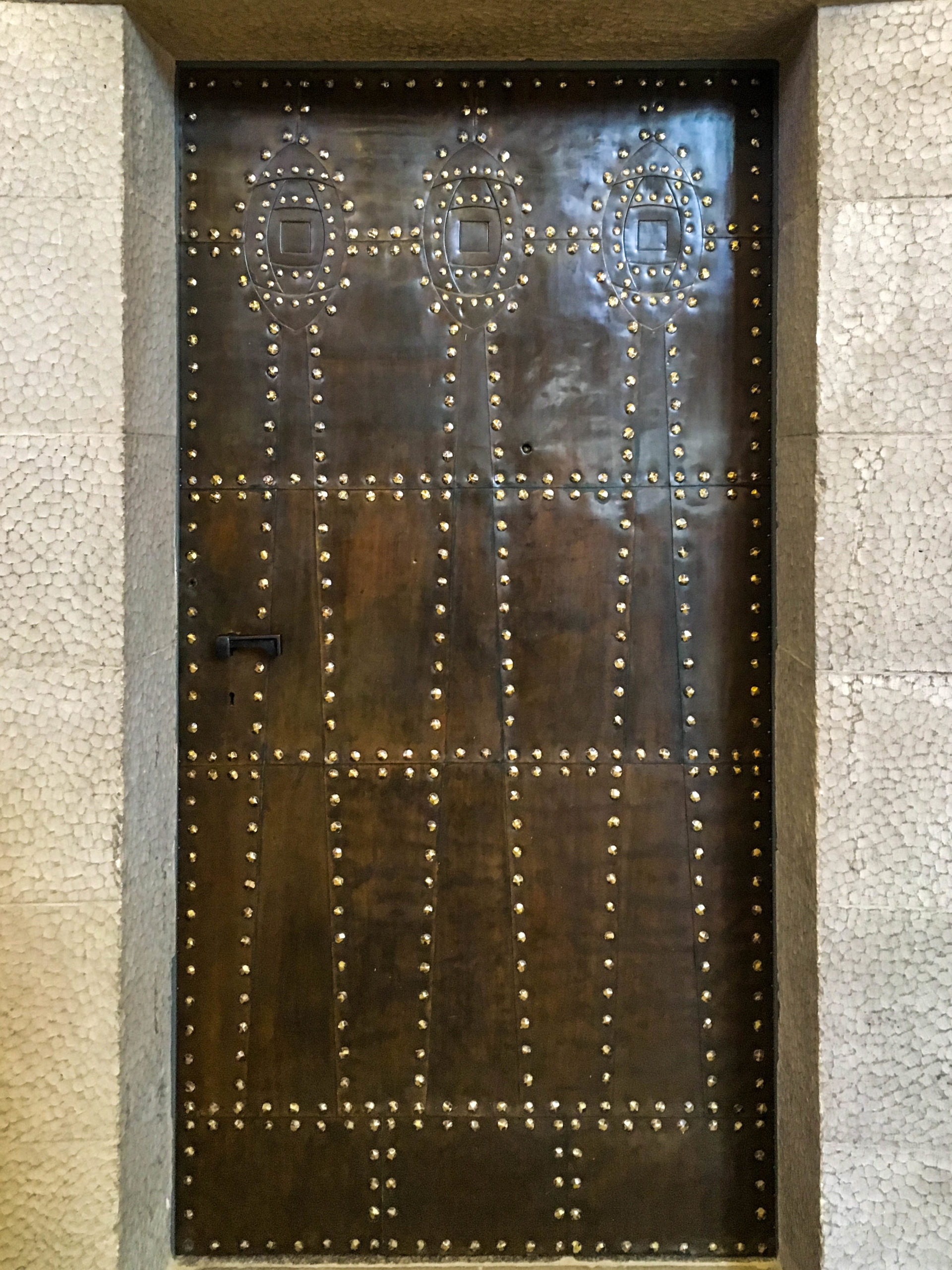1905 – 1907
Architects: Robert Curjel, Karl Moser
Durlacher Allee 23, Karlsruhe, Germany
The Lutheran Church in Karlsruhe was built from 1905 to 1907 according to plans by architects Robert Curjel and Karl Moser in the eastern part of the city.
Church Building
The exterior of the Lutheran Church is characterized by large wall surfaces divided only by a few windows.
Like the church building, the massive 53-meter-high tower is constructed of yellow Palatine sandstone.
The use of roughly carved ashlars gives the church the appearance of being hewn from one piece of rock.
It is part of a coherent ensemble of church, rectory and parish rooms.
Martin Luther
At the base of the bell tower is a monumental relief of Martin Luther preaching, the work of sculptor Oskar Kiefer.
Interior
The interior of the Luther Church consists of a low, vaulted central room that opens in all four directions into flat enclosed cross arms with galleries.
The altar, pulpit and organ form a unit in the central axis of the room. The relief by Hermann Binz behind the pulpit shows a scene from the Sermon on the Mount. The mosaics are by Heinrich Altherr.
The pews are arranged across corners, allowing visitors to sit with an unobstructed view of the preacher.
Restoration
After destruction during World War II, the church building was restored beginning in 1946. The original windows by Max Laeuger and the organ by Heinrich Voit have not been preserved.
In 1961, new windows by Klaus Arnold were installed, and in 1984 the interior was restored in accordance with the requirements of monument preservation.

